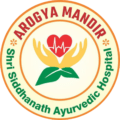Cranio Sacral Therapy

Craniosacral therapy (CST) is a holistic, hands-on approach to healthcare that focuses on enhancing the body’s natural healing capabilities. Developed by osteopathic physician Dr. John Upledger in the 1970s, Craniosacral therapy is based on the concept of the craniosacral system, which includes the membranes and cerebrospinal fluid that surround and protect the brain and spinal cord.
Key Elements of CST – Craniosacral Therapy:
1. Craniosacral System:
– The therapy is centered around the craniosacral system, which consists of the membranes (dura mater, arachnoid mater, and pia mater) and cerebrospinal fluid that surround and protect the brain and spinal cord.
2. Inherent Rhythm:
– Craniosacral therapists believe that the craniosacral system has its own inherent rhythm, known as the “craniosacral rhythm.” This rhythm is thought to be related to the production and absorption of cerebrospinal fluid.
3. Gentle Touch:
– Practitioners use a light touch, typically no more than the weight of a butterfly, to assess and facilitate changes in the craniosacral system. This touch is applied to various parts of the body, including the head, spine, feet, and sacrum.
4. Listening and Responding:
– Therapists “listen” to the subtle movements and patterns in the craniosacral rhythm and respond with gentle manipulations to help release restrictions or imbalances in the system.
5. Whole-Person Approach:
– Craniosacral therapy takes a holistic approach, considering the interconnections between the craniosacral system and other body systems. The goal is to promote overall health and well-being.
Potential Benefits of Craniosacral Therapy (CST)
1. Pain Relief:
– It is often used to address various forms of pain, including headaches, migraines, and musculoskeletal pain.
2. Stress Reduction:
– The gentle nature of the therapy can induce a state of deep relaxation, helping to reduce stress and tension.
3. Improving Sleep:
– Some individuals report improved sleep quality and patterns after receiving craniosacral therapy.
4. Enhancing the Immune System:
– Proponents suggest that CranioSacral Therapy may have a positive impact on the immune system by promoting overall balance in the body.
5. Emotional Release:
– Some people experience emotional release during or after sessions, suggesting that CranioSacral Therapy may have an impact on emotional well-being.
6. Support for Neurological Conditions:
– While not a cure, CranioSacral Therapy is sometimes used as a complementary therapy for certain neurological conditions, such as concussions and mild traumatic brain injuries.
Procedure of CST
1. Counselling and history taking
First step in CST session is counselling and history taking. Practitioner takes a proper history and counsel him / her. According to needs and previous history, practitioner plans for CST session.
2. CST Session
The person who wants to take CST session is asked to sleep on CST table with relax position with one to four deep breathing practices. Then CST session starts. Usually it starts from feet. CST therapy is then given to various parts of the body. It takes around 30 minutes to 100 minutes. After CST session, person usually goes in deep relaxed sleep.
3. After care of CST
According to vibrations received in CST session, practitioner asks for 2 to 5 more sessions for proper healing. Then nothing major precautions are required after this CST session. He or she can do their regular job and meals.
Considerations:
– Individual Responses: Responses to craniosacral therapy can vary, and its effectiveness is a subject of ongoing debate within the medical and therapeutic communities.
– Safety: Craniosacral therapy is generally considered safe when performed by trained and qualified practitioners.
– Integration with Conventional Care: It’s important for individuals to communicate with their healthcare providers and inform them about any complementary therapies they are considering. Craniosacral therapy is not meant to replace conventional medical care but may be used as a complementary approach.
About Dr. Priyanka
The qualified CST practitioner in Arogya Mandir Shri Siddhanath Ayurvedic Hospital, Miraj is Dr. Priyanka. She has completed her CST training in January 2024. She is well experienced CST practitioner. Other than this, she is MBBS and MS Opthalmic surgeon doing her practice at NAB eye hospital, Miraj.
She has following merits which makes her best CST practitioner
- Doctor – She completed MBBS with MS ophthalmology. Thus, she is well known about human body.
- Connected with Nature – She loves spending time in Nature and trekking hills. She is well connected to nature and thus, she has lots of positivity in her mind.
- Spirituality – She is spiritual. She practice various spiritual activities in her daily schedule. Do deep meditation regularly.
- Well knowledge of Sanskrit language – She practice Sanskrit shloka daily. Her Sanskrit vocabulary and pronunciation of Sanskrit is very good.
- Loves yoga and Pranayama – She also loves to do Yoga and Pranayama in morning with inhaling fresh air.
- Food – She takes Satvik food daily. She mostly avoids Tamsik food. She is vegetarian.
- Peaceful Talking – Her talk is very peaceful, which helps in better counselling of persons.
What people says about CST



